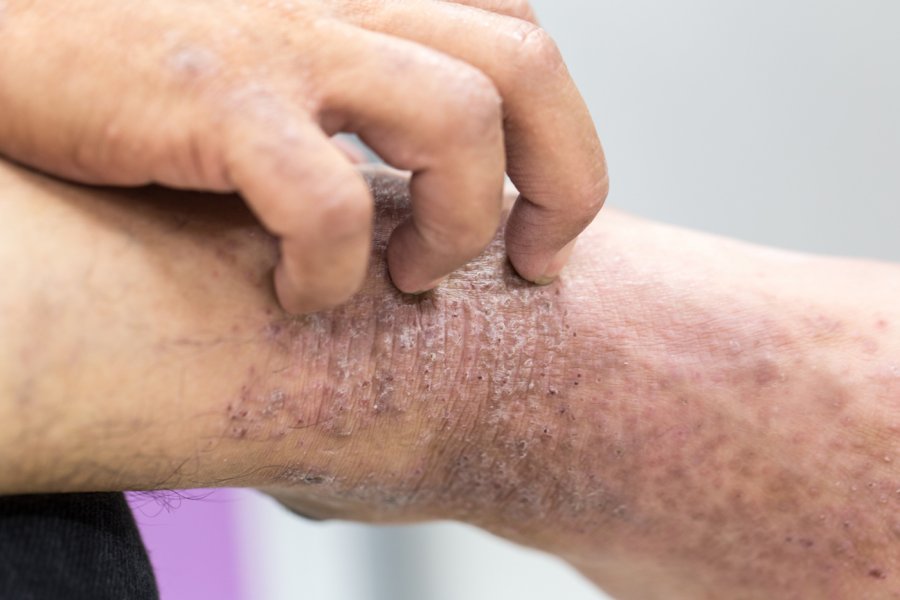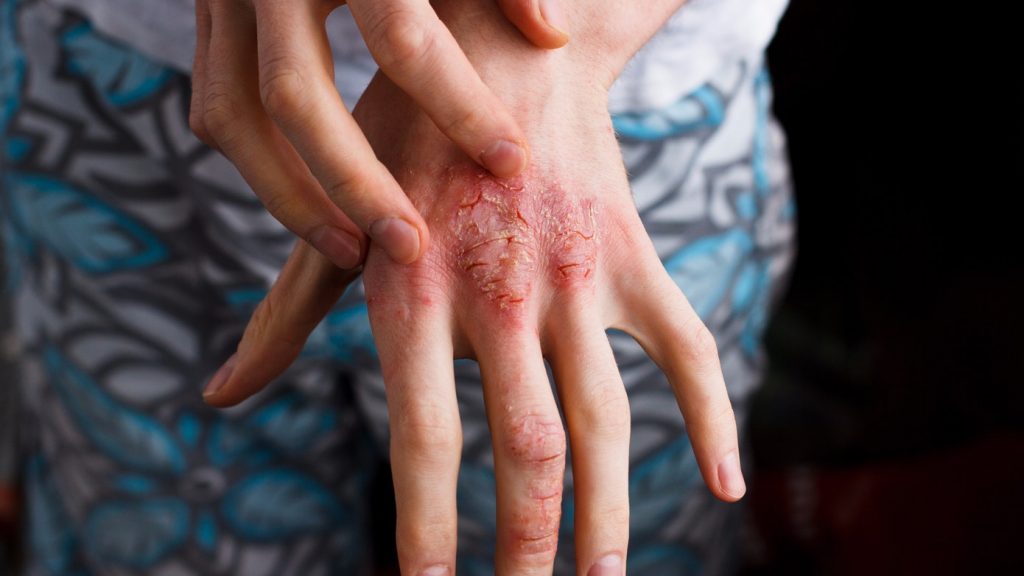
Adult atopic eczema (dermatitis)?
Atopic eczema is common in childhood. Eczema in 50–60% of children clears by
puberty, but, in others, it is persistent or recurrent in adult life. In any adult with eczema,
ask about personal or family history of atopic disease—infantile eczema, bronchial
asthma, and/or allergic rhinitis. For more detailed discussion of the cause and
management of atopic eczema in children.

What should I look for?
• Dry, scaly skin.
• A symmetrical erythematous, scaly rash, worse in flexures.
• Intense itch with excoriations, nodules (prurigo nodularis, and/or thickened (lichenified)
skin 2° to scratching and rubbing.
• Crusting, weeping, or vesicles suggesting 2° infection (bacterial or herpesvirus).
Widespread vesicles and fever = eczema herpeticum, an emergency, most often seen in
children.
• Atopic individuals have skin that is easily irritated, and adults may also have an irritant
contact dermatitis, often on the hands or face.
• Erythroderma in severe disease.
• Thin skin (bruising, telangiectasia, striae) 2° to prolonged use of potent topical
corticosteroids.
What should I do?
• Skin swabs for bacterial and viral culture if signs suggest infection.
• Soap substitutes (containing antibacterials) and emollients control dryness and reduce
bacterial colonization of the skin. even though the patient may have a long history of
eczema, find out exactly how the skin is managed, and explain how to use emollients and
to avoid irritants such as soap or shower gels.
• Prescribe a potent topical corticosteroid ointment to use once or twice daily.
• Alternatively: tacrolimus ointment 0.1%, but avoid in infected skin.
• Oral antibiotics or antivirals to control infection, if required.
• A sedating antihistamine may relieve irritation, e.g. hydroxyzine.
• A short course of oral prednisolone (30mg/day, tailing off over 2–3 weeks) may be
required for severe acute flares.
• Consider referral for patch tests to exclude an allergic contact dermatitis, particularly in
patients with facial eczema or patients with no previous history of eczema.
• Consider skin biopsy to exclude Cutaneous T-cell lymphoma if the patient does not
have a personal or family history of atopic disease and this is a new presentation.
• Courses of phototherapy or steroid-sparing agents (e.g. azathioprine, ciclosporin) may
be indicated in severe chronic disease.
• Wet dressings can help.